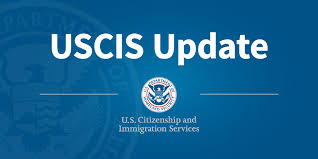Learn More About:
Immigration News & Updates eNewsletter © 2011 - 2020
For questions about U.S. Residency, Green Cards and Immigration Visas, Visit our Website at: www.ImmigrateToday.com or call our office at: (954) 382-5378
Check Out This Cool Stuff For Immigrants....
Immigration
Questions & Answers
This Week's Immigration News
Immigration News & Updates
Immigration How To:
How Do I Contact the National Visa Center About My Daughter’s Case?
Questions About Immigration? We have the answers!
We Are Here To Help, Call us now for a FREE consultation (954) 382-5378
Helpful Immigration Tips You Can Use...
Question: I came up here on a seasonal work visa and after a few years met my husband who is American and we got married in 2017. At the time my daughter was living with my mother in Jamaica due to me working in the US and I wanted her to finish up school there before coming to join me in the U.S.. My question is about whether my husband can sponsor her since she is now 19 years old. We heard it has to be before she is 18, so we are confused about that, thanks.
In its continuing war against International students, the Trump administration directed the U.S. Immigration and Customs Enforcement (ICE) agency to crack down on foreign students who are in the U.S. using approved employment authorization documents to work for American companies.
As a result, ICE recently arrested 15 international students who were working with approved optional practical training (OPT) work permits, for allegedly fraudulently reporting employment with U.S. “companies that don’t exist.”
International Students On OPT Arrested In Recent ICE Crackdown!
AMERICAN IMMIGRATION
LAW CENTERS
Immigration Questions: (954) 382-5378
POSTING DATE: November 2, 2020
Answer: U.S. immigration regulations allow step-parents to sponsor their step-children, as long as the marriage between the step-parent and the child’s biological parent occurred before the child turned age 18. As long as it did, the U.S. step-parent can sponsor the step-child as a “minor” until the child reaches age 21. Similarly, if a child is age 21 or older, the step-parent can sponsor the child as an adult, just like a biological parent can. So in your daughter’s case, since you and your U.S. citizen husband married before she turned age 18, he can still sponsor her as a minor child until she reaches age 21.
Once the USCIS approves a family petition (form I-130), it forwards the case to the National Visa Center (NVC), which handles processing of cases for relatives outside the U.S., by preparing the case for the U.S. Consulate in your family member’s home country.
After the sponsor receives the I-130 Approval Notice from the USCIS, the NVC generally sends out a notification that it has received the case from the USCIS.
What To Expect At Your Naturalization Ceremony And Beyond
Once your Application for Naturalization is approved, the USCIS puts your case in the queue to be scheduled for your Oath of Allegiance which takes place at your naturalization ceremony. This taking of your Oath of Allegiance completes the process of becoming a U.S. citizen.
Understanding the types of Oath Ceremonies:
There are two kinds of Oath of Allegiance ceremonies, one, is a judicial ceremony, where the court administers the Oath of Allegiance for Residents who have requested a name change and the regular administrative ceremony, during which the USCIS administers the Oath of Allegiance.
Don’t Let Your Immigration Case Be Rejected! Use The Online USCIS
Filing Fees Calculator To Help You Determine The Correct Fee
Filing immigration applications with the incorrect filing fee is the leading cause of case rejections by the USCIS. This can be inconvenient and sometimes very serious for certain applications which have filing deadlines.
As a result, the USCIS has an Online Fee Calculator to assist customers in calculating the correct fee amounts to include when filing their forms.
For background, OPT enables international students to work in the U.S. in positions related to their field of study, for up to one year, (with an additional 24 months for students in STEM fields) following graduation. Under tough administration rules, students are now required to report employment information to the Department of Homeland Security in order to remain in status. Students on OPT who remain unemployed for more than 90 days are required to either leave the country, re-enroll in school or change to another visa status. Working for a U.S. company in a field unrelated to a students field of study is a violation of student status.
ICE plans to continue investigations of international students to verify authorized employment and reportedly intends to revoke hundreds of approved OPT work permits and even deny future STEM OPT extension applications. As a result, international students need to be very cautious about working in jobs which are not related to their degrees.
The Online Fee Calculator asks users to select a form, or combination of forms, and then to answer a series of questions. The tool then calculates the correct fee amount that the filer must submit, based upon his or her answers and can be accessed by both computer and mobile devices.
Check out the USCIS Online Fee Calculator
USCIS Announces Forms Updates
The USCIS has recently updated form I-129F, Petition for Alien Fiancé(e) also called K-1 or K-3 Spouse (K-3) and form I-102 Application for Replacement/Initial Nonimmigrant Arrival-Departure Document to obtain a duplicate I-94 card. Beginning Dec. 28, 2020, the USCIS will only accept the new 07/23/20 edition of form I-129F and new 11/08/19 edition of form I-102. Applications filed on or after December 28, 2020 using the older forms edition will be rejected.
Question: My daughter got accepted by a private school in New York for gifted kids and we want to apply for a student visa for her. But she is only 17, so I want to get a visa so that I can come and live with her while she is attending school in America. My question is if that is an F-2 visa and do I apply at the same time as my daughter?
Answer: Unfortunately, parents of international students attending institutions in the U.S. are not eligible to obtain F-2 visas. Only the spouse and/or children of a student on an F-1 visa are eligible to apply for an F-2 Visa. (Spouse means 'husband' or 'wife. ') Parents or any relatives who want to accompany an F-1 student cannot do it as a dependent, they must enter the U.S. in a different visa category, like an B1/B2 for visitors. However, the B1/B2 visa does not allow a parent to actually live or work in the U.S., only to “visit” a child who is attending school. When you apply for the B visa, be careful what you say as your stated reason to visit the U.S., since if the U.S. Consular officer believes you intend to live here with your daughter while she is attending school, your visa and maybe even hers will be denied.
Question: My daughter got her us citizenship through her husband last year and now she is sponsoring my application for a green card. My question is whether I need to wait until I get my green card before applying for my wife (not her mother) and our 5 years old son? Or can I file for them now since my application was already approved and I am just waiting for my interview to be scheduled at the embassy?
Answer: That is a great question and very important to understand. U.S. Citizens can sponsor parents individually, as long as the parent has a qualifying relationship with the U.S. child. However, the immigration category for parents excludes all dependents, meaning that the parent being sponsored cannot bring a spouse or minor child through the parent’s immigration process as the parent of a U.S. Citizen. It’s a cruel regulation which often separates families unnecessarily.
However, once a parent has completed the immigration process and received U.S. residency, he or she can then sponsor their spouse and children. Currently, there is no immigration waiting line in the F2A category for spouses and minor children of U.S. residents and it is the same processing time as those for spouses and minor children of U.S. citizens. So, in your case, you will need to wait until Trump’s immigration ban is lifted, then your immigrant visa appointment will be scheduled at the U.S. Consulate. Once your immigrant visa is issued, you will need to enter the U.S. in order to receive residency. Once you do, you can then sponsor your wife and daughter. Its important to note the parents who are inside the U.S. are NOT subject to Trump’s immigration ban and are able to adjust status to residency without waiting for the ban to be lifted. It is feared that if Trump is re-elected, he may extend the immigration ban indefinitely.
So what’s going to happen at your naturalization ceremony?
1. Receive Your Naturalization Ceremony Notice to Take the Oath of Allegiance
While some Immigrants who request it may be able to participate in a naturalization ceremony on the same day as their naturalization interview, many Residents must wait for the USCIS mail them a notice with the date, time, and location of their scheduled naturalization ceremony, called a Notice of Naturalization Oath Ceremony (Form – N-445). Those who cannot attend the scheduled naturalization ceremony must return the notice to their local USCIS office, along with a letter requesting a new date and explaining why they are not able to attend the scheduled naturalization ceremony. Residents who fail to show up for their naturalization ceremony without having requested a rescheduling may receive a denial of their naturalization case.
2. Complete Form N-445, Notice of Naturalization Oath Ceremony before checking in at the Ceremony
Residents should complete Form N-445, Notice of Naturalization Oath Ceremony before arriving at the ceremony, prior to check in with USCIS. During check-in, a USCIS officer will review your responses to the questionnaire.
3. Surrender of your Permanent Resident Card (Green Card)
Residents who are becoming U.S. Citizens must surrender their Permanent Resident Cards to the USCIS at the time they check- in for the naturalization ceremony. Those who have lost their cards can receive a waiver.
4. Taking the Oath of Allegiance to the United States
A Resident is not a U.S. citizen until he/she takes the Oath of Allegiance to the United States during the naturalization ceremony. After the Oath, new U.S Citizens receive their Certificate of Naturalization.
5. Notes about the Certificate of Naturalization
New U.S Citizens should carefully review the Certificate of Naturalization for accuracy while still at the ceremony. Any inaccuracies must be brought to the attention of the USCIS before leaving the ceremony. Unless or until you apply for your U.S. Passport, your Certificate of Naturalization is your official proof of your U.S. Citizenship. Those who lose their Certificate of Naturalization must request a replacement by filing Form N-565, Application for Replacement Naturalization/Citizenship Document and paying the $555 USCIS filing fee. The waiting time for a replacement can be lengthy.
6. Time to apply for Your U.S. Passport
Once you receive your Certificate of Naturalization, you can immediately apply for a U.S. passport. You will receive an application for a U.S. passport at your naturalization ceremony, called the “U.S. Citizenship Welcome Packet” or you can go online to the U.S. Passport office
7. Time to Register to Vote!
Now that you are a U.S. Citizen, it is your right and privilege to vote. You can register to vote at certain locations in your community, which may include post offices, motor vehicle offices, county boards of election, and offices of your state Secretary of State. You can read more about registering to vote by reading the government publication: “A Voter’s Guide to Federal Elections."
8. Final Step: Update your Social Security Record
After you become a U.S. Citizen, you will need to notify the Social Security Administration (SSA) to update your Social Security record. You can find your local Social Security office by calling 1-800-772-1213 or by visiting: www.socialsecurity.gov. You can go to your local SSA office about ten days after your ceremony to give time for the SSA to be able to access your new status in the USCIS records. Be sure to take your Certificate of Naturalization or U.S. passport with you. Good luck!
If the family member is in a “preference category”,(for all relatives who are not the Spouse, Parent or minor child of a U.S. Citizen), the letter will also state that there are no visas presently available for the foreign family member and that he or she should not make any plans to immigrate to the U.S. until a visa becomes available (which can be many years down the road).
And during the long wait for an Immigrant Visa, family circumstances may change and addresses need to be updated in order for the NVC to have current contact information for the U.S. Citizen or U.S. Resident sponsor. Similarly, when a U.S. Resident becomes a U.S. Citizen, or a married child divorces the process for immigrating family members may speed up, but the NVC may not be aware of the change unless they receive a copy of the new Citizen’s Naturalization Certificate or the child’s divorce certificate.
To contact the NVC, call: (603) 334-0700 or do an online inquiry at Ask the NVC. Be sure to give them the case number, your name/ birth date and the same for your daughter. If you do not have the NVC case number, you can give them the USCIS case number instead.













